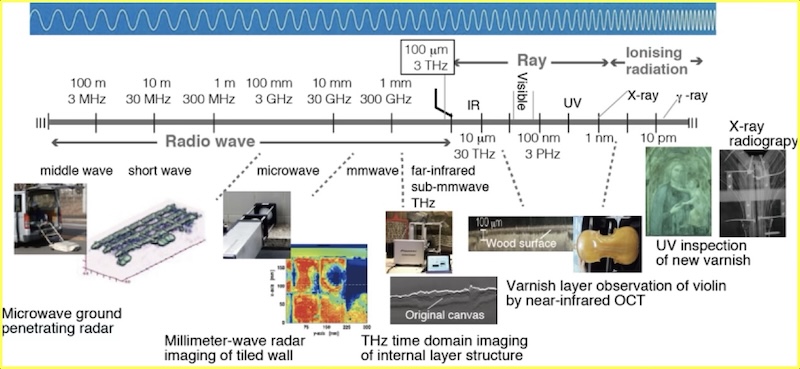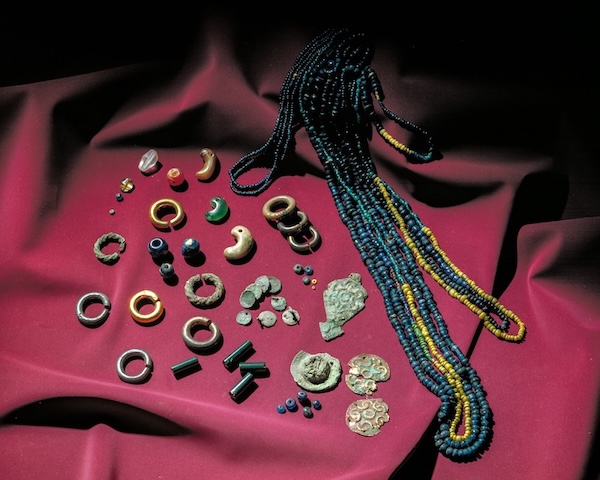PROJECTS
Development of Sensing Technology and Data Fusion Analysis
The examination of cultural heritage should not be performed destructively, as is the case with the inspection of industrial products, where samples are taken and can be broken for some tests. Electromagnetic waves are therefore widely used in heritage science, allowing nondestructive observation of the internal structure of art objects and material analysis. When observing structures, the depth of penetration and resolution depend on the frequency. Therefore, the optimum frequency is selected according to the object. For example, radio waves with low resolution but deep transmission are used for the investigation of archaeological remains and buried objects underground, while optical tomography is used for the varnish layers of the painting surface.
In addition to improving the measuring equipment for application, the comparative analysis of data obtained by non-destructive testing techniques in various frequency bands will be enhanced by information technology.

Application of machine learning to archaeological excavation data classification and analysis.
Ancient objects have been excavated in Japan that have travelled across the Eurasian continent by various routes. By rearranging them in time and space and taking a bird's-eye view of them, it should be possible to trace the history of mankind based on real objects. The use of informatics, such as machine learning, seems to be an effective way to efficiently analyse the vast amount of data on excavated objects.
Based on the results of scientific research, data scientists can analyse them without preconceptions and produce a “space-time bird's-eye view of excavated artifacts” that can be used as material for research into human activities and the transmission of artistic techniques in the humanity studies.

Introduction of research activities at Nara National Research Institute for Cultural Properties (in Japanese)
Mechanisms of surface deterioration of stone cultural heritage.
Theoretical analysis of the mechanisms of surface deterioration of stone cultural heritage, which is thought to be mainly caused by changes in temperature and humidity, will contribute to the conservation and restoration of various artworks, including archaeological sites.
Introduction of research activities at Nara National Research Institute for Cultural Properties (in Japanese)